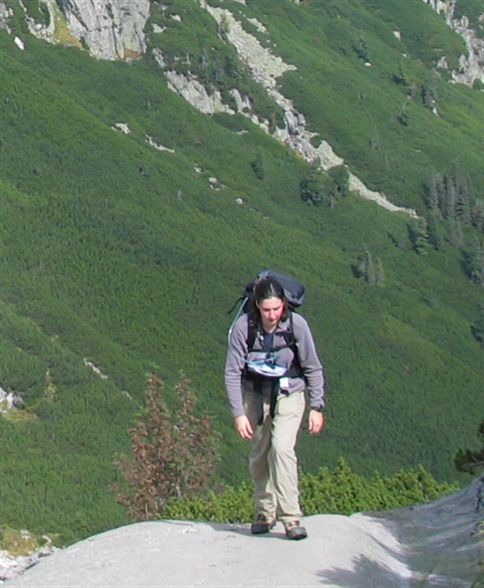
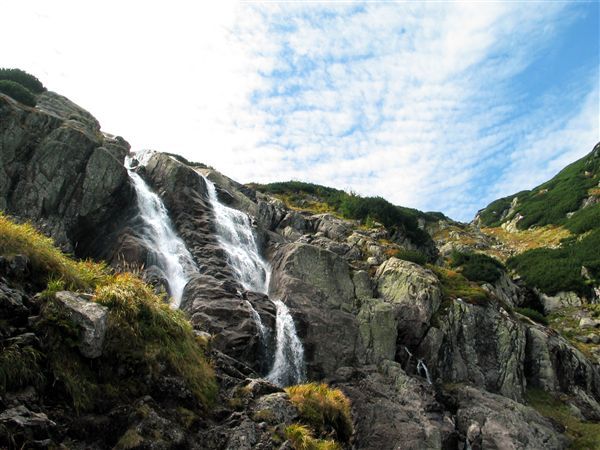
| TED Case Study # 763 by Andrew Helegda |
Oscypek A Different Kind of Cheese |


1. The Issue
With the addition of 10 new member states to the European Union family, new agricultural products are being considered as possible geographical indicators. One such example is Oscypek (Ossh cyh pehc), a smoked cheese from southern Poland. Sheep milk, combined with a traditional recipe, has been used for over 400 years to make this local specialty.
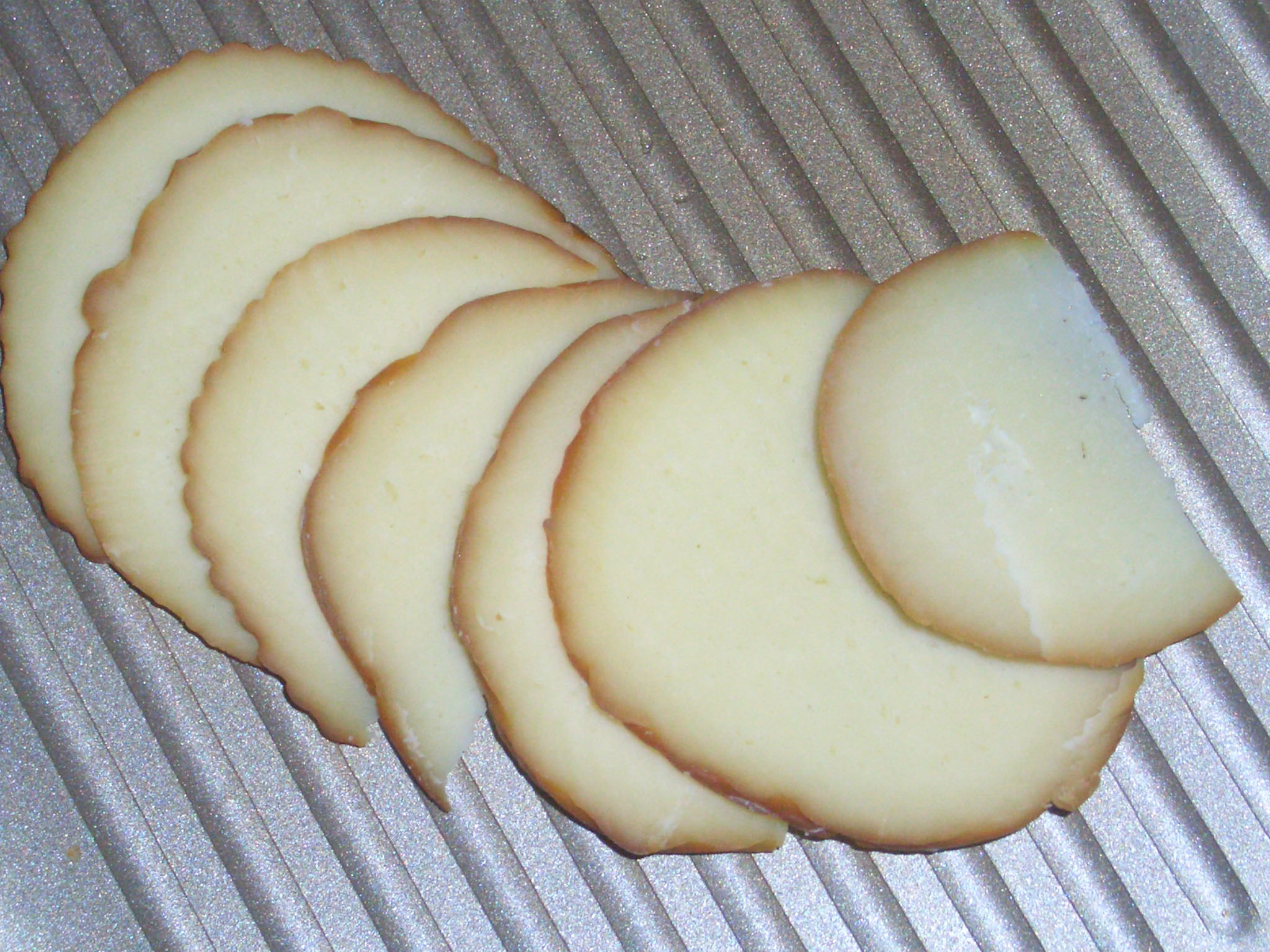
2. Description
Currently, the EU is evaluating this product's claim to regional authenticity, which would make Oscypek an eligible candidate for the status of a geographical indicator (GI). Prior to joining the European Union, Oscypek had been designated as a regional specialty within Poland, but the national law on the matter is no longer valid, because the European Union law takes precedence.
In addition, before Brussels can recognize Oscypek as a geographical indicator another factor needs to evaluated. The traditional method of making the cheese does not correspond to the health and sanitary standards applied to dairy products on a European level.
The objective of this case study is to gain a better understanding of Oscypek's position as a European GI candidate.
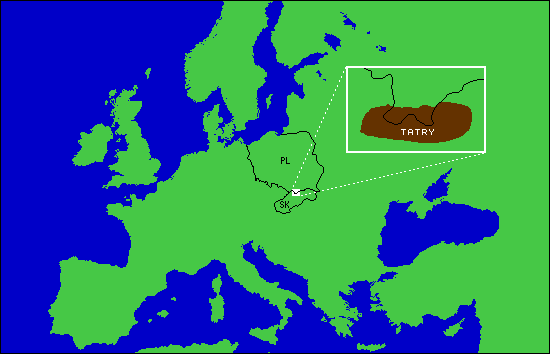
Podhale is considered to be Oscypek's birthplace . Over the past decade, similar cheeses have surfaced on the Polish market. As a result, a variety of the cheese exists today. The traditional ingredient in making this cheese is sheep milk, but variations made with goat and cow milk, as well as a combination of the three types of milk are also available. Although it is fairly easy for a local consumer from this region to distinguish between the authentic and the counterfeit version, this may prove to be a more cumbersome task for consumers in other parts of the country.
Before a GI status can be granted to Oscypek on the European level, the artisan production method is being examined by Brussels . The traditional method of making Oscypek does not include a formal pasteurization process; instead bacteria is eliminated through an introduction of specific animal enzymes. Agricultural specialists in Brussels are attempting to bring the standards of production in line with European norms.
Some entrepreneurs have already taken on the challenge of creating larger facilities for the production this cheese. In one individual case, the Krezol company was able to integrate tradition with a modern manufacturing process. (For additional information on their production method please use the following link: http://oscypki.com.pl/eng_zaklad.htm.) The challenge lies in the fact that most of the production is currently done in the traditional manner, as was the case 400 years ago.
People
The people who specialize in the production of Oscypek are referred to as Baca (Shepard). Their livelihood consists of raising such animals as sheep, cows, and goats. In addition, their households depend on small scale farming for subsistence. Self-sufficiency is an important trait of regional heritage, because even under the communist regime, the local population has always been dependent on their own small scale farming output.
Region
Podhale, nestled high up
in the Tatra Mountains on the Polish side of the Polish and Slovak border, is
a region with a rich local heritage, and an identity much different from the
rest of the country. The location makes it quite different from the extensive
plains in the north of Poland .
As much of the rest of the country, however, Podhale has been changing hands
of foreign suitors many a time throughout its history; from Austro-Hungarian
rule, to the occupation by the third Reich and to finally become a part of Poland
after the Second World War.
Today's Podhale still cultivates
strong ties to the Roman Catholic faith; its people are characterized by an
independent spirit; and households continue to be predominately agriculture-
based. Since the fall of communism 15 years ago, however, entrepreneurship has
flourished in the region. Driving around Podhale, one is bound to see many small
businesses that have mushroomed in a relatively short time and that have survived
the average five-year end mark for unsuccessful start-ups.
The distinct folklore and local heritage make Podhale and the surrounding regions
of Orawa and Spisz a magnet for tourists. By some accounts it is said that the
Tatra Mountains National Park is the second most visited national park in the
world after the Yellowstone National Park in the United States . Some of the
rare species of animals that inhabit the park include lynx, golden eagles, and
brown bear.
In addition, Zakopane (meaning: Buried, under the snow), the region's largest
city, is considered to be 'the winter capital of Poland.' Mountains with skiing
slopes reaching as high as 420 feet make the region very attractive to tourists
from the north of the country, and lower prices make Podhale a bargain for those
from other parts of the European Union.
Traditions
The Tatra mountain range allowed local inhabitants to cultivate a unique identity that is looked upon as exotic by compatriots from the north. The folk costumes in this region would be a good example. Due to the colder winters, costumes are made using thicker materials; this is especially true for men's pants, which are made out of thick wool (To view an example please visit the following address http://www.perfekt.krakow.pl/rzeszow2002/foto/2-02-DSCF0112.jpg ). Podhale also possesses culinary specialties not found in other parts of Poland , and Oscypek is one such example.
Climate
Podhale's weather patterns are a product of the collision of various air masses above Poland . Maritime air moves across Western Europe , Arctic air comes down from the North Atlantic , and subtropical air arrives from the South Atlantic . The Arctic air dominates for much of the year, but its combination with warmer currents moderates temperatures and generates considerable precipitation, clouds, and fog.
The artisan process of making an Oscypek
The first step in the making of Oscypek is obtaining milk. Local shepherds milk sheep three times a day during the summer season. This milk is then stored in large barrels, maintaining the temperature at 36 - 40 Celsius. This process helps remove all impurities. Then, the milk is combined with the animal's stomach lining containing digestive enzymes, which help eliminate any form of bacteria.The ingredients are then churned for about half an hour, this helps solidify this mix. Then a wooden stick is used to separate the massive (barrel size) chunk into smaller pieces. The smaller pieces are then mixed with boiling spring water. The bottom of the barrel is then scraped in order to extract the cheese. One Liter of the combination is then placed in a double-sided cone-shaped wooden-frame, which gives Oscypek its particular form. These frames are then stored for one week in the log hut where the entire process took place before finally achieving the smoked taste and smell. The exact method may very slightly from this general recipe, since each shepherd claims to have his secrets in making the best Oscypek.
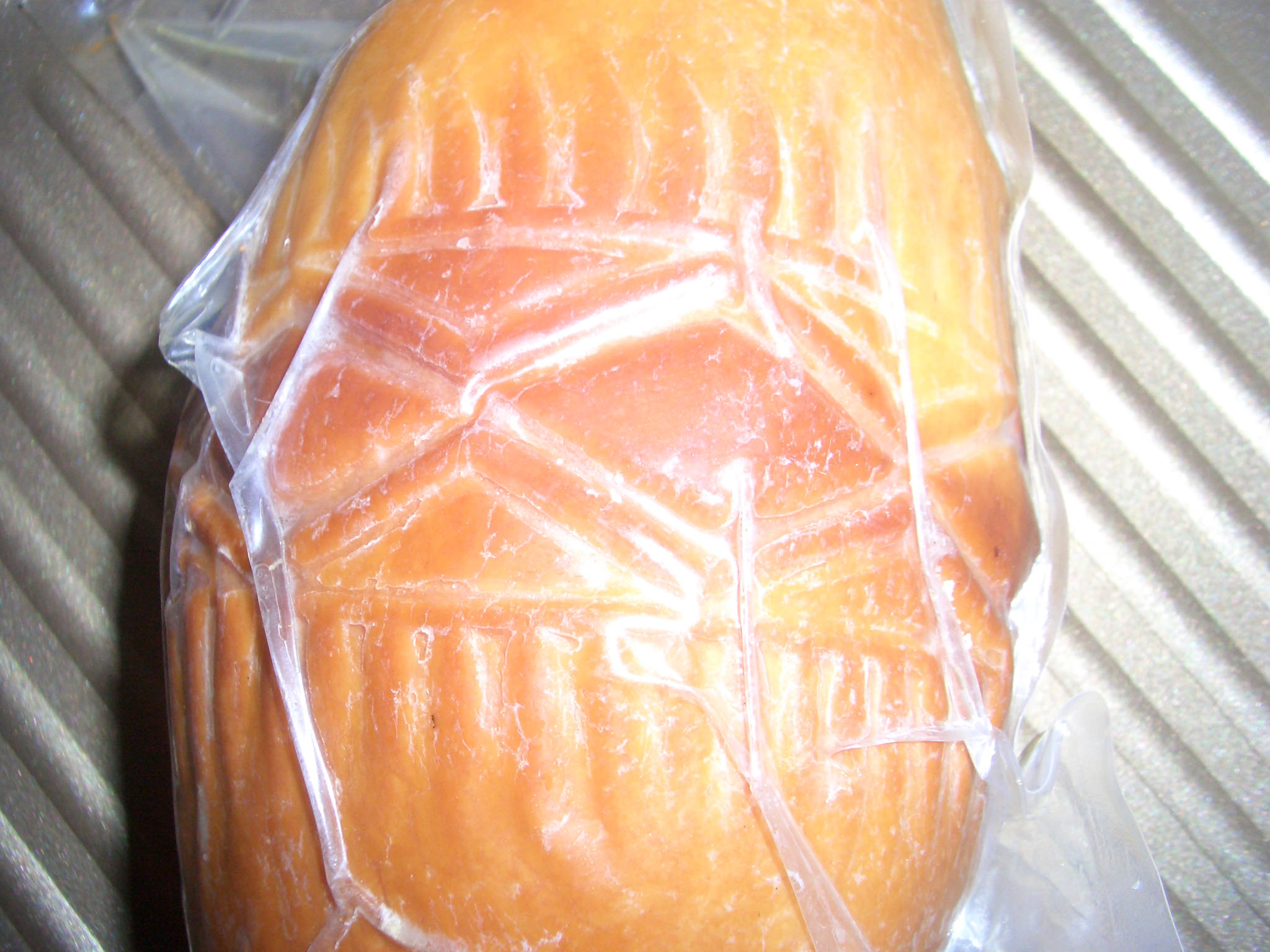
Each Oscypek carries an ingrained logo representing the particular household that made it. These logos serve as a way for the shepherds to 'brand' their own product.
Similar scenario:
Certain French cheeses cannot be sold in the United States in its original form either, because it does not fulfill the Food and Drug Administration's rule on pasteurizing all dairy products aimed at the mass consumer market. Hence, imported French cheeses, such as Brie and Roquefort, have to be pasteurized at a higher temperature in order to adhere to FDA's regulations. Unfortunately, once this process takes place their specific taste and aroma is altered as well. Moreover, because of this standard, locally produced cheese cannot be manufactured in this particular tradition either.
Significant Dates for Oscypek
May 2004 - 10 new members join the European Union: Cyprus, the Czech Republic, Estonia, Hungary, Latvia, Lithuania, Malta, Poland, Slovakia, Slovenia
October 2004 - initial tentative deadline for Oscypek's GI application process. The Polish law giving Oscypek a regional specialty status also expired on this date. According to the Embassy of Poland in Washington D.C., the application process is nearly completed, but a specific date was not provided.
3. Related Cases
Cases Involving Poland |
Cases Involving Dairy |
The Trade and Environment Database contains other similar cases that pertain to preserving cultural artifacts. Some of the related cases include FETA cheese, and Parmesean cheese. In addition, there are several cases specific to Poland, which include a case study of Zubrowka (a regional vodka), as well as one discussing waste imports in the former Eastern Bloc countries Poland Waste Imports.
4. Author/Date
Andrew Helegda/ January 2005
II. Legal Cluster
The Intra-European Union level
Before ensuring that Oscypek is granted a GI status with the European Union, the artisan production method is being examined by Brussels . Currently, specialists in agriculture are comparing the standard methods of making Oscypek, with the norms and regulations that exist on a supranational level. It is in fact this issue, the clash between the original recipe and modern norm, posses a significant challenge. The traditional method of making Oscypek does not include a formal pasteurization process; instead bacteria is eliminated through an introduction of specific animal enzymes. Brussels , however, is not sure if the traditional method can be applied to the mass production of this cheese. Can geographical indicators be entirely exempt from the European level production standards? The answer to this question will be available once a conclusion is reached in Brussels .
Multilateral level
Dairy products have been discussed in the WTO on regular basis. Trade in these type of products can be prone to an immense amount of political pressure stemming from agricultural trade groups. An example of such a scenario can be found in countries like Japan , as well as France . In both political systems farmers have a tremendous amount of leverage within the political sphere. Poland , with a large number of agriculture based households, faces a similar political climate.
This project focuses on a product that currently is being considered for the geographical indicator by the European Union. Poland is still considered as a country en vois de development, and it may take up to 75 years for this central European country to reach the E.U. average per capita income level (www.wprost.pl). A part of the dilemma is the 27 % of the population, which is employed by the agricultural sector, as well as an unemployment rate of 20 % (www.cia.gov).
The country has joined the WTO on July 1st 1995 as a founding member. The following is an excerpt from the World Trade Organization's profile of the country, in terms of the tariffs in the agricultural sector. This statement is based on 2000 year data:
" as part of its Uruguay Round commitments, all non-tariff measures, including variable levies, were converted into tariffs albeit at high rates, and minimum market access was provided by tariff quotas on agricultural products, including beef, pork, poultry meat, milk, and certain fruit and vegetables. "
Source: www.wto.org
During the 1990s the Polish agricultural sector has been subject to major reforms. Most of these changes focused on aligning the economy with international standards set forth by the various WTO rounds, as well as those of the European Communities (as the E.U. is referred to in the World Trade Organization agreements).
Following the Uruguay Round, new worldwide trends have been observed in the dairy industries. The general output of dairy products has decreased, according to a WTO press release. This trend is attributed to a decrease in output in Central and Eastern Europe . The major achievement during this period in the Polish agricultural sector was the suspension of minimum export prices for all dairy products. This decision was taken by the International Dairy Council, which as a part of the World Trade Organization was designed to make an evaluation of the situation in and outlook for the world market for dairy products.
According to the organization, agricultural assistance is still considered to be a major policy focus for Poland . Support for this sector has doubled between the early 1990s and 1998, an as a result agricultural prices are 27% higher then the world average (www.wto.org). In addition, such an economic environment may have contributed to stifling the potential improvements in efficiency within this sector. The report concludes by stating that transfers to farmers contributed about 2.7% of the GDP in Poland . Below is an example of tarffis introduced by Poland in the agricultural sector.
Average weighted import tariffs in Poland
(in %, according to the 1998 commodity pattern of imports)
|
|
Without suspensions |
Including suspensions |
||||||
HS |
Description |
EU |
CEFTA |
Other countries |
Total |
EU |
CEFTA |
Other countries |
Total |
I-XXI |
Total |
2.3 |
1.8 |
7.1 |
3.5 |
2.3 |
1.8 |
6.5 |
3.3 |
I-IV |
Agricultural products |
18.2 |
11.6 |
13.0 |
16.0 |
18.1 |
11.6 |
12.7 |
15.8 |
Courtesy of www.wto.org
5. Discourse and Status: Disagreement and progress
6. Forum and Scope: European Union/Regional
7. Decison Breadth: 25 member states
8. Legal Standing: treaty
9. Geographic locations
a. Geographic domain: Europe
Courtesy: www.cs.put.poznan.pl/holidays/tatry/where.html
b. Geographic site: Although the Tatra region spreads to Slovakia, this type of cheese is only made in Poland.

Courtesy: Picture courtesy of www.cia.gov
c. Geographic impact: Poland
10. Sub national factors: yes
11. Type of Habitat: temperate
Oscypek is made with either sheep milk, goat milk, cow milk, as well as a mix of the three kinds of milk.
This type of cheese has been manufactured in the Podhale region in southern Poland for over 400 years. Throughout this time the production methods have not changed much, and this traditional artisan craft has been passed down from generation to generation.
At the moment this product can be sold in Poland to such hypermarket chains as Geant, Hit, and Biedronka. Once the details of the authentication process with the European Union are finalized, the product will be available in all the countries of the European Union.
Oscypek is not currently being exported outside of Poland . Conclusion of talks regarding the authentication procedure may change this situation; by ensuring that this regional specialty will obtain the status of a geographic indicator, and that new guidelines for the production method have been agreed upon by all the parties. Although there are currently no formal exporters of the product, certain stores in a Polish neighborhood of Chicago do carry this delicacy. No information is presently available on the origin of that particular oscypek-like cheese.
According to Slow Foods, an organization specializing in issues related to Geographical Indicators, points out that Osypeck has been introduced to the world at the most recent Paris Food Show. In order to be marketed in the European Union, however, the authentication process needs to be completed. Michal Jeziorski mentions in his Warsaw Voice article that: "Oscypek, or sheep's cheese produced by Polish highlanders, may also soon become an export hit. After European borders open, Oscypek, as a regional product, may conquer European markets. For the time being, efforts are being made-by the interested local governments and organizations-to reserve the trademark for Polish highlanders, who have been making the cheese since the 15th century" (warsawvoice.pl). Hence, it will be interesting to see if Oscypek will be as popular in other parts of Europe.
In terms of general statistics for the European dairy sector, the region (E.U 15) imports 13% and exports 31.9% of the world cheese production; thus, making most of its own chesses, and relying on exporting the product.
Over the past two years Cheese consumption in Europe has increased by 3.5 per cent per year, and it is estimated to grow even more over the next decade. Per capita consumption is estimated to increase from 18.9 kg in 2002 to 20.3 kg by 2010 (www.europa.eu). According to the data, most of the increase in consumption will be followed by an increase in production, which will leave even less cheese available for the export market. Consumption of cheese in Poland averaged about 5 kg. per person in for 2002. Specific statistics for Oscypek are currently unavailable for Oscypek, because it's mostly distributed in a traditional manner through 'street sales,' by vendors who can only carry several kilos per basket.
12. Type of Measure: Intellectual Property
13. Direct v. Indirect Impact: direct impact
14. Relation of Trade Measure to Environmental Impact
Related to agriculture and intellectual property
15. Trade Product Identification: Cheese
16. Economic Data: none
17. Impact of Trade Restriction: low
18. Industry Sector: agriculture
19. Exporters and Importers: none

20. Environmental Problem Type: Cultural
It is presently difficult to assess the impact of changes on the individual level, because this depends on the outcome of the negotiations. In general, however, patenting Oscypek will allow the local population to get more involved in its production, and help generating more employment in the region. A change in the family-oriented method of production changes might also bring about some implications for regional traditions.
Location, the Geographic Attributes, and the Inhabitants
The regions of Podhale, Orawa and Spis are all located on the southern border of Poland, neighboring Slovakia.
The vegetation in the region consists of beech and fir forest at lower altitudes, as well as spruce forest, dwarf pine and grass at higher altitudes. Overgrazing by sheep, goats, and cows contributed to some changes to the vegetation. An environmental issue related to Oscypek pertains to the stability of the local ecosystem. The pastures used for grazing are found on low- fertility soil, where small amount of fertilizer is being used, the Podhale region, on average, uses less fertilizer that other parts of the country. The land ownership is very fragmented, divided into plots no larger then one hectare, which contributes to over-grazing of these pastures. In addition, some plots of land are, although jointly owned by people from nearby villages are located within the area on the Tatra National Park.
21. Name, Type, and Diversity of Species
The sheep in the region have been cross-bread, they partly belong to the breed of Walachenschaf sheep, only found in Slovakia, Czech, and southern Poland.
Type: Podhale, a region in southern Poland
22. Resource Impact and Effect: high
23. Urgency and Lifetime: low and thousands of years
24. Substitutes: imitation products
25. Culture: yes
26. Trans-Boundary Issue:
Some have speculated that if a patent is not obtained for the exclusive production in the Podhale region, a neighboring region in Slovakia may be the first one to obtain a patent. According to information provided by the local artisans who specialize in the production of Oscypek, however, this is highly unlikely. They say that Slovakia makes a very different type of cheese called korbaciki (I apologize about the spelling to the Slovak readers). Based on this research no other regions in Central Europe specialize in making a similar type of cheese. This artisan process has started in Podhale, a region which has not been a part of Slovakia.
27. Rights: yes
Additional Resources About the Region
Examples of traditional architecture
Where in the world are the Tatra Mountains?